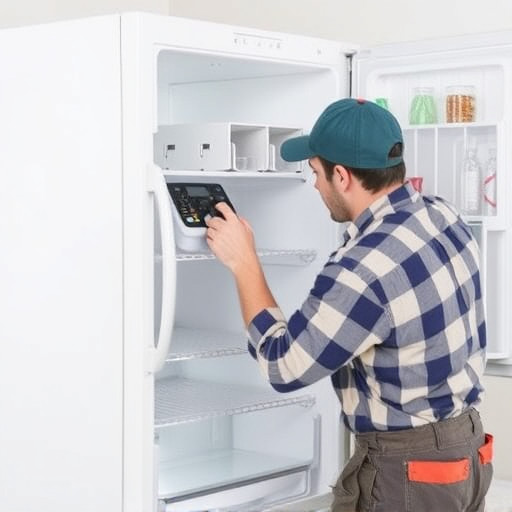Refrigerator thermostats are crucial for maintaining ideal cooling temperatures, ensuring food safety by controlling refrigerants, fans, and coils based on internal climate monitoring. During refrigerator repair, understanding thermostat function is key. Replacing a thermostat is a simple process (1) power off/disconnect, (2) remove old thermostat, (3) inspect/install new one, (4) securely reconnect wires for improved temperature control in your refrigerator repair.
Are you tired of your refrigerator not maintaining the right temperature? It might be time for a thermostat replacement. This comprehensive guide delves into the intricacies of refrigerator thermostats and provides step-by-step instructions for replacing them, ensuring accurate temperature control. Understanding how these essential components function is key to effective refrigerator repair. By following these simple steps, you can maintain a consistent and optimal environment for your food.
- Understanding Thermostat Functions in Refrigerators
- Steps for Replacing a Thermostat for Accurate Temperature Control
Understanding Thermostat Functions in Refrigerators

Refrigerators, being essential appliances for food preservation, rely heavily on their thermostats to maintain optimal cooling temperatures. These devices play a crucial role in regulating the internal climate, ensuring your perishables stay fresh and safe to consume. Understanding how they function is key when it comes to identifying the need for a replacement during refrigerator repair.
The thermostat’s primary task is to monitor and control the temperature inside the fridge by adjusting the flow of refrigerants. It works in conjunction with other components like sensors, fans, and coils. When the set temperature deviates from the ideal range, the thermostat triggers specific actions. For instance, if the internal temperature rises above the set point, it signals the compressor to activate, which cools the air and reduces humidity. Conversely, if it’s too cold, the thermostat sends a signal to turn off the compressor until the desired temperature is reached again. This constant regulation ensures your refrigerator operates efficiently and effectively, making it an integral part of any refrigerator repair or maintenance routine.
Steps for Replacing a Thermostat for Accurate Temperature Control

Replacing a thermostat is a straightforward process that can significantly improve your home’s temperature control, especially for appliance enthusiasts like those who frequently engage in refrigerator repair. Here’s a simple guide to ensure accurate results:
1. Power Off and Disconnect: Start by shutting off the power supply to avoid any accidents. For refrigerators, locate the control panel and disconnect the wires connected to the thermostat. This step is crucial for safety during replacement.
2. Remove the Old Thermostat: Depending on your appliance, you might need a screwdriver to take out the old thermostat from its housing. Once removed, inspect the new thermostat, ensuring it’s compatible with your device. A simple twist or slide action may be all it takes to install the new one. Make sure it’s securely in place before reconnecting the wires, matching them carefully to their corresponding terminals.
Upgrading your refrigerator’s thermostat is a straightforward yet effective step towards achieving precise temperature control. By following the simple steps outlined in this article, you can easily replace your old thermostat and ensure your fridge maintains the ideal chill for your food and beverages. Remember, accurate temperature regulation not only extends the lifespan of your refrigerator but also prevents spoilage and ensures your energy bills stay efficient. So, take control of your fridge’s temperature and embark on a journey to keep your perishables fresh with confidence – it’s a simple fix that makes a significant difference in your kitchen!
